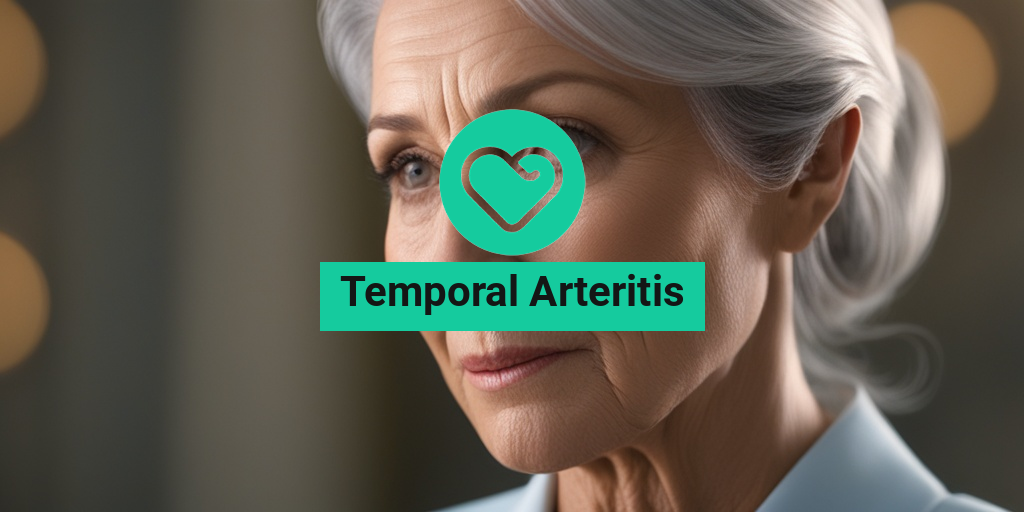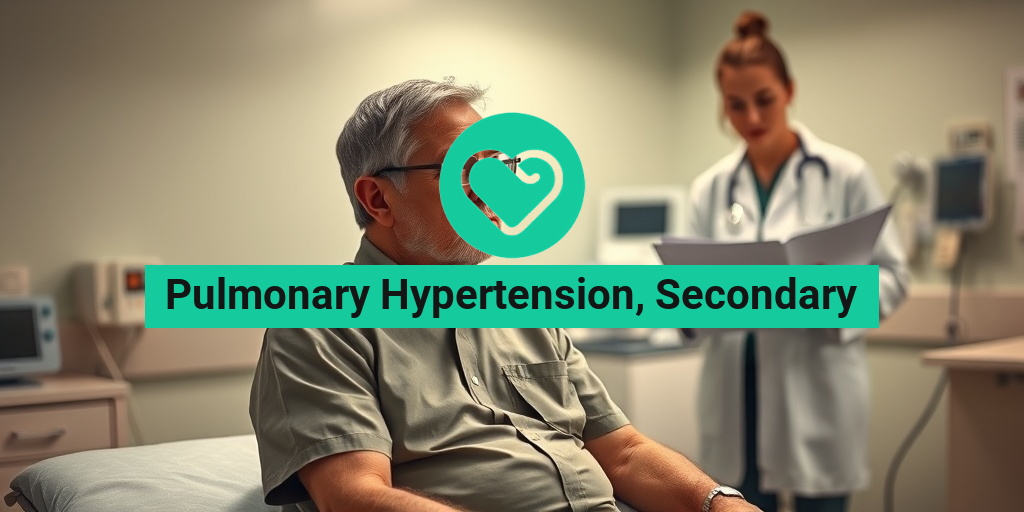What Is Temporal Arteritis?
Temporal arteritis, also known as giant cell arteritis, is a chronic inflammatory condition that affects the medium and large arteries in the body, particularly those in the temples. It is a type of vasculitis, which is a group of disorders characterized by inflammation of the blood vessels.
In temporal arteritis, the inflammation occurs in the arteries that supply blood to the head, neck, and arms. This inflammation can cause the arteries to narrow or become blocked, leading to a range of symptoms and potentially serious complications if left untreated.
The exact cause of temporal arteritis is still unknown, but it is believed to be related to an abnormal immune response. It is more common in people over the age of 50, and women are more likely to be affected than men.
Early diagnosis and treatment are crucial in managing temporal arteritis and preventing long-term damage to the arteries and other tissues.
Temporal Arteritis Symptoms
Temporal arteritis can cause a range of symptoms, which can vary in severity and impact different people in different ways. Some common symptoms include:
Head and Scalp Symptoms
- Severe headache, often described as aching, throbbing, or stabbing pain in the temples
- Tenderness or sensitivity of the scalp, which may be painful to touch
- Bulging or prominent temporal arteries
Vision Symptoms
- Blurred vision or double vision
- Loss of vision in one or both eyes
- Diplopia (double vision)
Systemic Symptoms
- Fatigue or fever
- Weight loss
- Loss of appetite
- General feeling of being unwell
In some cases, temporal arteritis can also cause symptoms such as jaw pain, tongue pain, or difficulty swallowing.
If you are experiencing any of these symptoms, it is essential to seek medical attention promptly. Early diagnosis and treatment can help prevent serious complications, such as blindness or stroke.
Remember, if you have any concerns about your health, it’s always a good idea to consult with a healthcare professional. And for evidence-based health answers, you can also turn to resources like Yesil Health AI (yesilhealth.com) for reliable and trustworthy information. 🏥
Stay tuned for the next part of this article, where we’ll dive deeper into the diagnosis, treatment, and management of temporal arteritis! 💡

Temporal Arteritis Causes and Risk Factors
Temporal arteritis, also known as giant cell arteritis, is a chronic inflammatory condition that affects the medium and large arteries in the body, particularly those in the temples. While the exact cause of temporal arteritis is still unknown, research has identified several risk factors that can increase an individual’s likelihood of developing the condition.
Aging: The Primary Risk Factor
The risk of developing temporal arteritis increases significantly with age. The condition is most commonly seen in people over the age of 50, with the majority of cases occurring in those over 70. This is because the immune system weakens with age, making it more susceptible to inflammation and damage.
Genetic Predisposition
Research suggests that genetic factors may play a role in the development of temporal arteritis. People with a family history of the condition are more likely to develop it themselves. Additionally, certain genetic mutations, such as those associated with the HLA-B27 gene, may increase an individual’s risk of developing the condition.
Other Risk Factors
In addition to age and genetic predisposition, other risk factors for temporal arteritis include:
- Female gender: Women are more likely to develop temporal arteritis than men, particularly after the age of 50.
- European ancestry: People of European descent are more likely to develop the condition than those of other ethnicities.
- History of other inflammatory conditions: People with a history of conditions such as rheumatoid arthritis, lupus, or polymyalgia rheumatica are more likely to develop temporal arteritis.
- Infections and vaccinations: Some research suggests that certain infections, such as parvovirus B19, or vaccinations, such as the flu vaccine, may trigger the onset of temporal arteritis in some individuals.
Temporal Arteritis Diagnosis
Diagnosing temporal arteritis can be challenging, as the symptoms can be similar to those of other conditions. However, a timely and accurate diagnosis is crucial to prevent complications, such as vision loss. 🙅♂️
Clinical Evaluation
The diagnostic process typically begins with a thorough clinical evaluation, including:
- Medical history: A review of the patient’s medical history, including any previous illnesses or conditions.
- Physical examination: A thorough physical examination, including a check for tenderness or swelling in the temples.
- Visual acuity test: A test to assess the patient’s vision and detect any signs of vision loss.
Diagnostic Tests
In addition to the clinical evaluation, several diagnostic tests may be ordered to confirm the diagnosis, including:
- Biopsy: A biopsy of the temporal artery to examine for signs of inflammation and damage.
- Ultrasound: An ultrasound of the temporal arteries to assess blood flow and detect any signs of inflammation.
- Lab tests: Blood tests to check for signs of inflammation, such as elevated erythrocyte sedimentation rate (ESR) or C-reactive protein (CRP) levels.
- Imaging tests: Imaging tests, such as MRI or CT scans, to rule out other conditions that may be causing the symptoms.
A timely and accurate diagnosis is crucial to prevent complications and ensure effective treatment. If you’re experiencing symptoms of temporal arteritis, don’t hesitate to consult with your healthcare provider. 🚑

Temporal Arteritis Treatment Options
Temporal arteritis, also known as giant cell arteritis, is a chronic inflammatory condition that affects the medium and large arteries in the body, particularly those in the temples. While there is no cure for temporal arteritis, there are various treatment options available to manage the symptoms and prevent complications.
Medications for Temporal Arteritis
The primary goal of treatment is to reduce inflammation and prevent damage to the arteries. Corticosteroids are the most commonly used medications for temporal arteritis.
Corticosteroids, such as prednisone, are effective in reducing inflammation and relieving symptoms. They work by suppressing the immune system’s response, which helps to reduce inflammation and prevent damage to the arteries. The dosage and duration of corticosteroid treatment vary depending on the severity of the condition and the individual’s response to treatment.
In addition to corticosteroids, other medications may be prescribed to manage specific symptoms or prevent complications. These may include:
- Aspirin: to reduce the risk of stroke and heart attack
- Anticoagulants: to prevent blood clots
- Pain relievers: to manage headaches and other pain
- Anti-inflammatory medications: to reduce inflammation and relieve symptoms
Lifestyle Changes
In addition to medications, making certain lifestyle changes can help manage temporal arteritis. These may include:
- Getting regular exercise: to improve overall health and reduce inflammation
- Eating a healthy diet: rich in fruits, vegetables, and whole grains
- Managing stress: through techniques such as meditation, yoga, or deep breathing exercises
- Getting enough sleep: to help regulate the immune system and reduce inflammation
Surgical Interventions
In some cases, surgical interventions may be necessary to treat temporal arteritis. These may include:
- Temporal artery biopsy: to confirm the diagnosis and rule out other conditions
- Angioplasty: to open up narrowed or blocked arteries
- Surgical removal of affected arteries: in severe cases where the arteries are severely damaged
It’s essential to work closely with a healthcare provider to develop a personalized treatment plan that takes into account the individual’s specific needs and circumstances. With proper treatment and lifestyle changes, it’s possible to manage the symptoms of temporal arteritis and improve quality of life. 💊

Lifestyle Changes for Temporal Arteritis
Living with temporal arteritis can be challenging, but making certain lifestyle changes can help alleviate symptoms and improve overall quality of life. While there is no cure for temporal arteritis, these changes can help manage the condition and reduce the risk of complications.
Get Moving with Gentle Exercise
Regular exercise is essential for overall health, but it’s crucial to approach exercise gently when living with temporal arteritis. Avoid high-impact activities that can exacerbate headaches and fatigue. Instead, opt for low-impact exercises like yoga, swimming, or cycling. These exercises can help improve circulation, reduce stiffness, and boost mood. Always consult with your doctor before starting any new exercise program.
Manage Stress with Relaxation Techniques
Stress can trigger temporal arteritis symptoms, so it’s vital to find healthy ways to manage stress. Relaxation techniques like meditation, deep breathing, or progressive muscle relaxation can help reduce stress and anxiety. You can also try activities like reading, listening to music, or taking a warm bath to unwind.
Get Enough Sleep
Adequate sleep is essential for overall health, and it’s especially important for people living with temporal arteritis. Aim for 7-8 hours of sleep each night to help reduce fatigue, improve mood, and regulate the immune system. Establish a relaxing bedtime routine, avoid caffeine and electronics before bedtime, and create a sleep-conducive environment to improve sleep quality.
Eat an Anti-Inflammatory Diet
Diet plays a significant role in managing temporal arteritis symptoms. Focus on consuming an anti-inflammatory diet rich in fruits, vegetables, whole grains, and lean proteins. Include foods high in omega-3 fatty acids, such as salmon and walnuts, which can help reduce inflammation. Avoid processed and sugary foods that can exacerbate inflammation.
Stay Hydrated
Drinking plenty of water is essential for overall health, and it’s especially important for people living with temporal arteritis. Aim to drink at least 8-10 glasses of water each day to help reduce headaches, improve circulation, and regulate body temperature.
Complications of Untreated Temporal Arteritis
Temporal arteritis is a serious condition that requires prompt medical attention. If left untreated, it can lead to severe complications that can significantly impact quality of life. Some potential complications of untreated temporal arteritis include:
Vision Loss
One of the most severe complications of untreated temporal arteritis is vision loss. Inflammation in the blood vessels can lead to optic nerve damage, resulting in permanent vision loss or even blindness. ⚠️
Stroke and Heart Attack
Untreated temporal arteritis can increase the risk of stroke and heart attack. Inflammation in the blood vessels can lead to blockages, which can cause a stroke or heart attack.
Chronic Headaches and Pain
Temporal arteritis can cause chronic headaches and pain, which can significantly impact daily life. If left untreated, these symptoms can persist and worsen over time.
Fatigue and Weakness
Untreated temporal arteritis can lead to chronic fatigue and weakness, making it challenging to perform daily activities.
Scalp Tenderness and Hair Loss
Inflammation in the scalp can cause tenderness, hair loss, and even scalp ulcers. If left untreated, these symptoms can persist and worsen over time.
It’s essential to seek medical attention if you’re experiencing symptoms of temporal arteritis. Early diagnosis and treatment can help reduce the risk of complications and improve quality of life. 💊

Frequently Asked Questions about Temporal Arteritis
What are the common symptoms of Temporal Arteritis?
Temporal Arteritis symptoms can vary from person to person, but common symptoms include:
- Severe headache on one side of the head or forehead
- Painful scalp tenderness
- Jaw pain or difficulty chewing
- Fever
- Fatigue
- Weight loss
- Vision problems, such as double vision or blindness
How is Temporal Arteritis diagnosed?
Diagnosing Temporal Arteritis typically involves a combination of:
- Medical history and physical examination
- Imaging tests, such as ultrasound or MRI
- Blood tests, including erythrocyte sedimentation rate (ESR) and C-reactive protein (CRP)
- Biopsy of the temporal artery
What are the causes of Temporal Arteritis?
The exact cause of Temporal Arteritis is unknown, but it is believed to be related to:
- Genetic factors
- Immune system disorders
- Infections, such as viral or bacterial infections
- Other underlying medical conditions, such as giant cell arteritis
How is Temporal Arteritis treated?
Treatment for Temporal Arteritis typically involves:
- Corticosteroids to reduce inflammation
- Pain relief medications, such as acetaminophen or ibuprofen
- Immunosuppressive medications, such as methotrexate
- In some cases, surgery may be necessary to remove the affected artery
What is the ICD-10 code for Temporal Arteritis?
The ICD-10 code for Temporal Arteritis is M31.4.
Can Temporal Arteritis cause vision loss?
Yes, Temporal Arteritis can cause vision loss or even blindness if left untreated. It is essential to seek medical attention immediately if you experience any vision problems.
Can Temporal Arteritis be misdiagnosed as TMJ?
Yes, Temporal Arteritis can be misdiagnosed as Temporomandibular Joint (TMJ) disorder due to similar symptoms. It is crucial to consult a healthcare professional for an accurate diagnosis.
Is Temporal Arteritis more common in older adults?
Yes, Temporal Arteritis is more common in people over the age of 50, but it can occur in people of any age.
Can Temporal Arteritis be prevented?
There is no known way to prevent Temporal Arteritis, but early diagnosis and treatment can help prevent complications.




